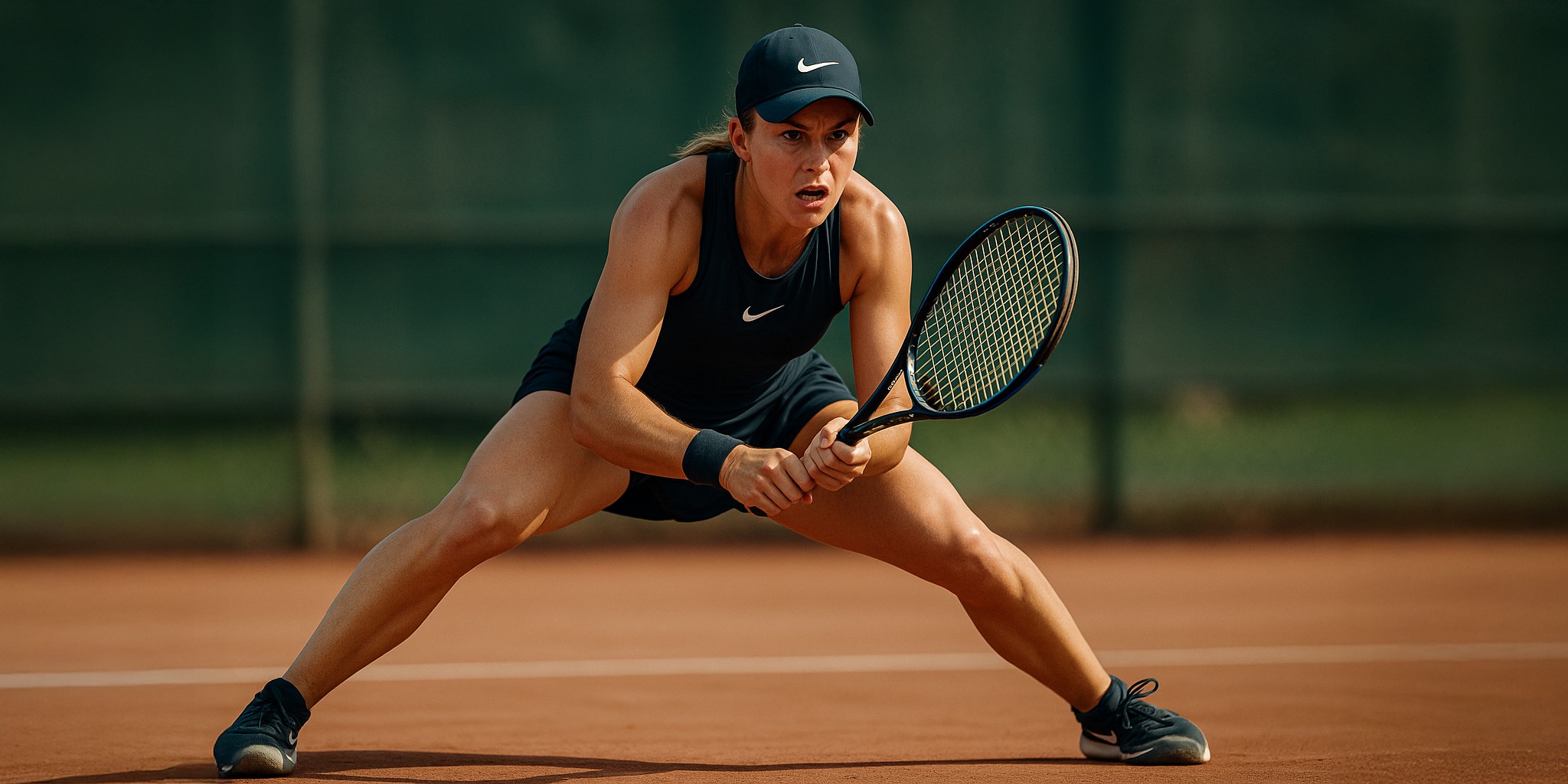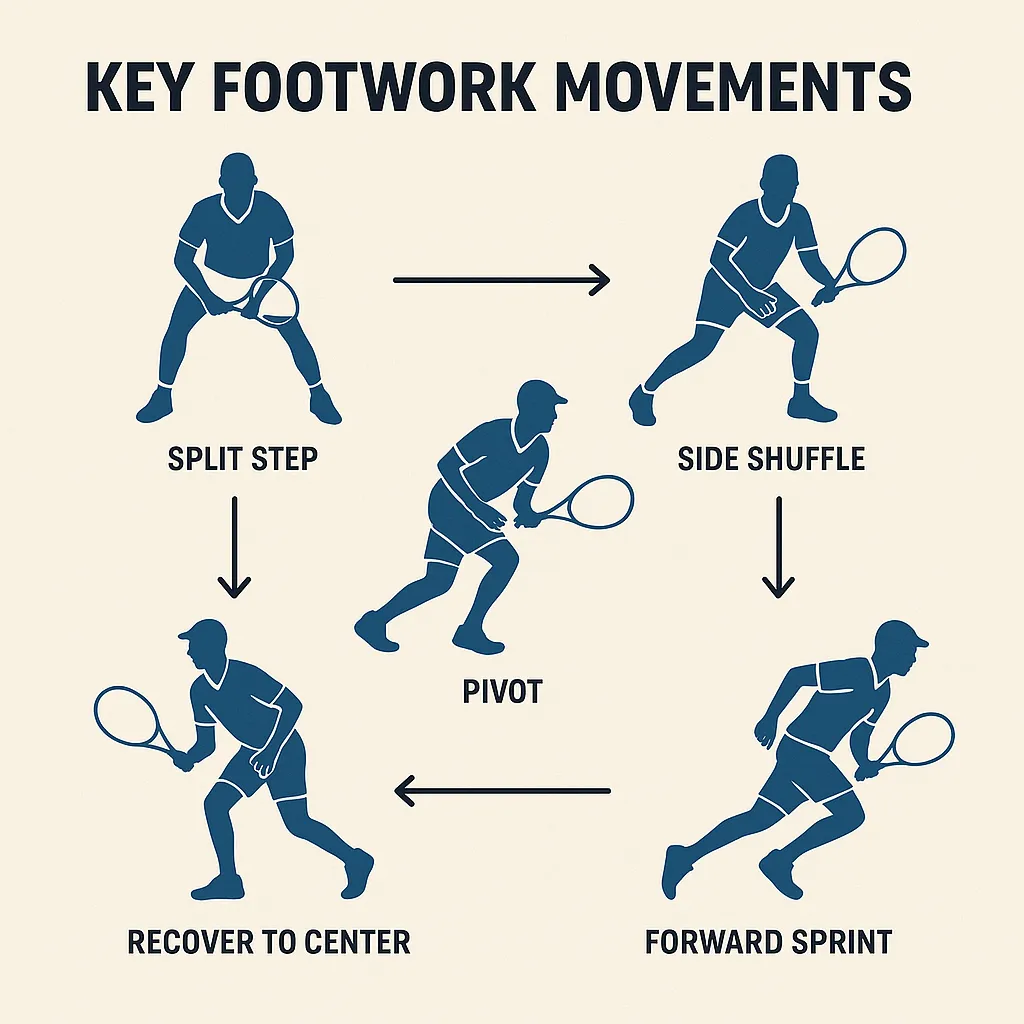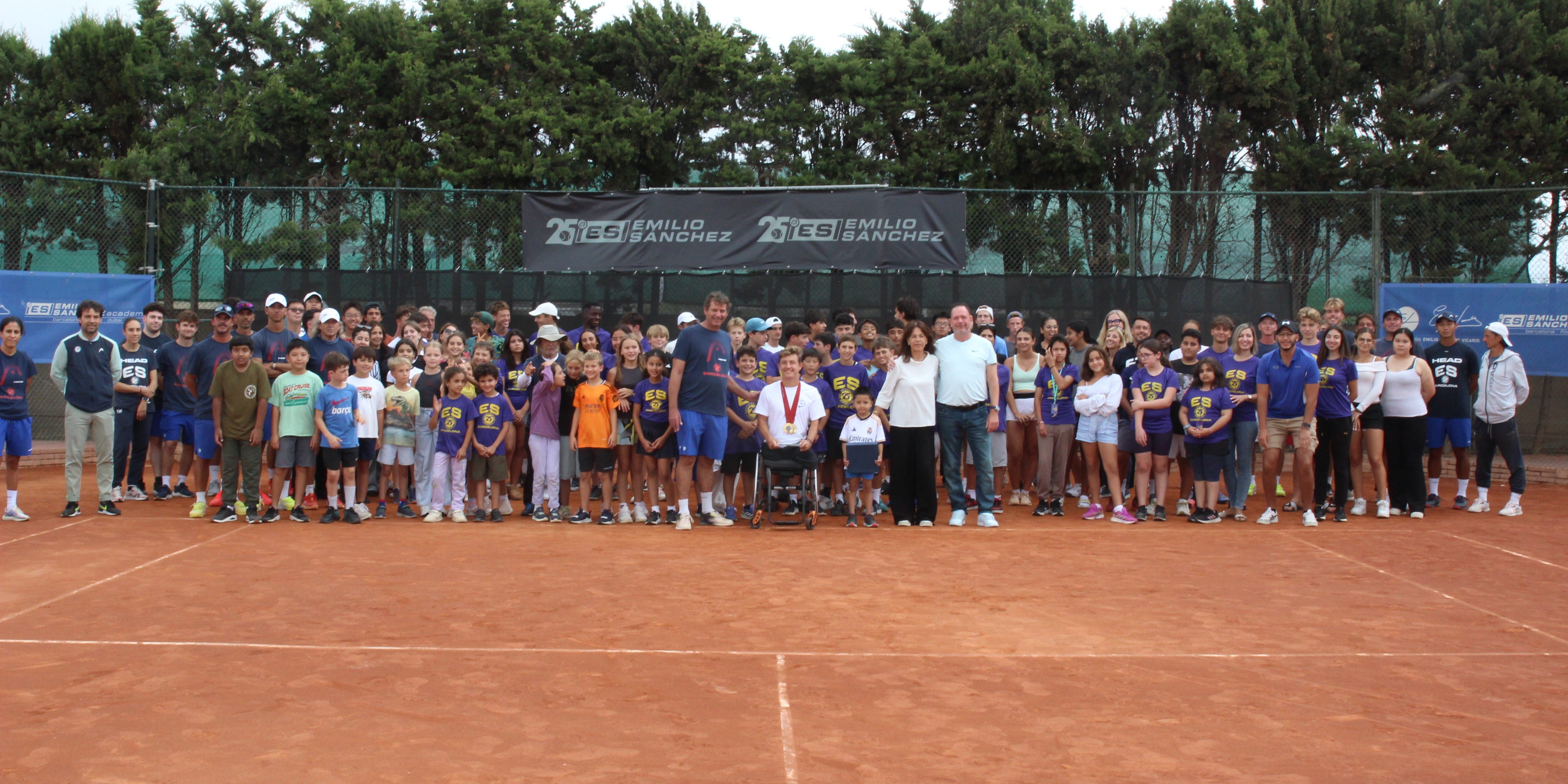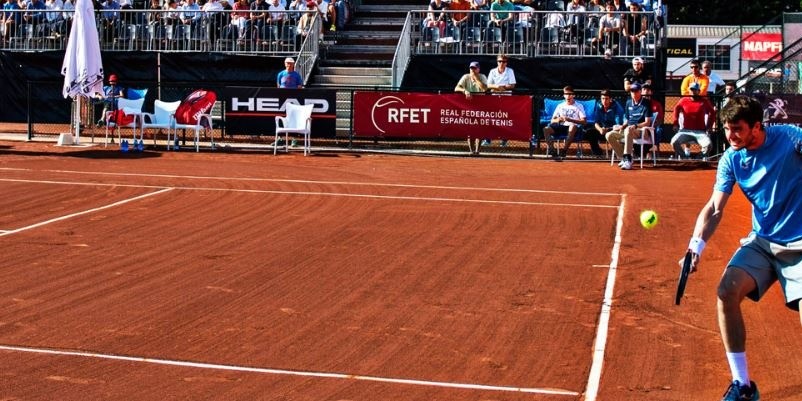
Improving Your Footwork in Tennis Improving footwork in tennis is essential to achieving high performance on t...
Read More
23 May 2025
Improving footwork in tennis is essential to achieving high performance on the court, especially in competitive settings like those found at an elite tennis campus club or in tennis lessons in Barcelona offered by the Emilio Sánchez Academy. It's not just about being fast — it's about moving efficiently, maintaining balance, and being able to adapt to every shot from your opponent. Good tennis footwork enables players to position themselves in time to strike the ball effectively, recover their court position quickly, and anticipate the next play — all key elements in any tennis fitness training program.
Here’s a detailed guide on how to improve your footwork specifically for tennis:
Before starting any drills, it’s crucial to understand the most common movements used on court:
Split Step: Arguably the most important movement. This involves a small hop just before your opponent strikes the ball. It allows the player to land with feet slightly apart and knees flexed, ready to push off in any direction. It’s a neuromuscular pre-activation that reduces reaction time.
Adjustment Steps: These are short, quick steps used to fine-tune the final distance to the ball and ensure you hit from the best possible position. Crucial for precision.
Lateral Movements (Side Shuffle/Crossover Step): Essential for covering the court side to side. Performed while keeping your body facing the net.
Short Sprints: Explosive movements in forward, backward, or diagonal directions to reach distant balls or cover the net.
Pivoting: A quick change of direction using the ball of the foot, common when preparing strokes or turning to run.
Recovery: Returning to the centre of the court after striking the ball.

These exercises focus on agility, speed, explosive strength, and coordination—tailored to the demands of tennis:
a) Agility and Reaction Drills on Court
Agility Ladder:
Basic Patterns: Perform different step patterns (feet together, one in/one out, lateral, crossover) through the ladder. Focus on foot speed, accuracy, and keeping your eyes forward.
Racquet Variant: Hold a racquet as if playing, simulating split steps and strokes as you exit the ladder.
Signal Reaction: Perform the patterns and on hearing a signal (whistle, "left", "right"), jump and move in the indicated direction.
Cone or Marker Drills:
T or Y Shape: Set a central cone with two side cones. Sprint to one side cone, touch it, return to centre, then move to the other. Vary the pattern.
Box or Diamond: Place four cones in a square or diamond. Move between them simulating court movements (sprints, lateral steps, backpedals).
Cones with Ball Touch: A partner feeds short balls to the cones and the player must move, touch the ball, and return to centre—simulating hitting and recovery.
Shuttle Runs with Racquet: Mark distances (e.g., service line, baseline). Sprint to a marker, touch the ground, and return—incorporate a split step before each change of direction.
Figure-Eight Jumps: Place two objects (balls, cones) 1–2 metres apart. Move your feet rapidly in a figure-eight pattern around them, simulating short foot adjustments before hitting.
b) Strength and Power Drills
Jump Squats: From a squat position, explode upwards. Improves leg power for split steps and take-offs.
Plyometric Lunges: Lunge, then jump to switch legs mid-air, landing in the opposite lunge. Enhances unilateral explosiveness.
Box Jumps: Jump explosively onto a box and land softly. Excellent for vertical power and shock absorption.
High Knees & Butt Kicks: Warm-up drills that improve coordination, focusing on knee lift and hamstring activation.
Skipping (Rope Jumping): Enhances foot agility, coordination, and cardiovascular endurance. Vary the patterns (feet together, alternating, side-to-side).
c) On-Court Ball Drills
Approach and Volley Drill: A partner feeds a short ball for approach, followed by rapid volleys to the corners. Trains forward speed and lateral net movement.
Forehand/Backhand Crosscourt and Down-the-Line Drill: Constant side-to-side and forward/backward movement with varied feeds, alternating forehands and backhands, both crosscourt and down the line.
Recovery to Centre: After each shot in a drill, focus on returning quickly to the centre of the court with a solid split step.
Ball Collection Movements: Scatter balls around the court. The player runs to pick one up and returns to the start as quickly as possible.

Consistent Split Step: Perform it before every opponent's shot—even before your own serve or return. It's the foundation of effective movement.
Light Feet: Avoid dragging your feet or landing flat on the heel. Stay on the balls of your feet (metatarsals) to react quicker.
Balance: Keep your centre of gravity low and a wide base (feet shoulder-width or more) for stability during changes of direction and strokes.
Posture: Slight flexion in the knees and hips improves reaction time and power generation.
Reading and Anticipation: Developing the ability to read your opponent’s body and the ball trajectory helps you move sooner, conserving energy and time.
Cardiovascular Endurance: Excellent footwork demands great stamina. Incorporate high-intensity interval training (HIIT) and long-duration cardio sessions.
Core Strength: A strong core (abdominals and lower back) provides stability and power transfer between the upper and lower body—vital for movement and stroke execution.
Recovery and Flexibility: Regularly stretch hamstrings, quads, calves, and glutes. Flexibility improves range of motion and helps prevent injuries.
You can structure your sessions as follows:
Warm-Up (10–15 minutes):
Light jog, high knees, butt kicks, joint mobility.
Dynamic exercises: lunges with twist, bodyweight squats.
Agility & Coordination (20–30 minutes):
Agility ladder drills (3–4 sets per pattern).
Cone drills (5–6 reps per pattern with active rest).
Skipping rope (1–2 minute rounds, multiple sets).
Strength & Power (20–30 minutes):
Jump squats (3–4 sets of 8–12 reps).
Plyometric lunges (3–4 sets of 8–12 reps per leg).
Box jumps (3–4 sets of 5–8 reps, focus on technique).
Calf raises.
Specific On-Court Drills (30–45 minutes):
Perform forehand/backhand and volley drills, prioritising movement quality and recovery.
Cool-Down and Stretching (10–15 minutes):
Static stretching for major leg muscles and core.
Consistency and variety are key. Adjust intensity and volume according to your fitness level and gradually increase the challenge. Solid footwork will make you a more complete and difficult player to beat on court!

Improving Your Footwork in Tennis Improving footwork in tennis is essential to achieving high performance on t...
Read More
La Emilio Sánchez Academy rinde homenaje al doble campeón de oro en los Juegos Paralímpicos de París, el holand...
Read More
La Academia Emilio Sánchez rindió homenaje a Daniel Caverzaschi por su histórica Medalla de Bronce en los Juegos Paral...
Read More
From April 1 to 7 at the Emilio Sánchez Academy in Barcelona, the 5th edition of the ATP Challenger Tour Tournament will be played, precis...
Read More
The Emilio Sánchez Academy & American School is committed to combating drought by implementing a series of measures, both to save water...
Read More